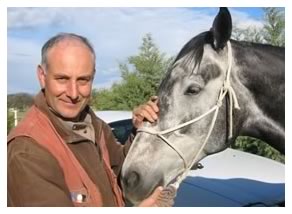
Home › Girth Pain & Dysfunction
That “Girthy” Horse is Suffering, Not Just Behaving Badly
Girthy horse = girth pain or discomfort + reactive behaviour.
The author’s clinical experience of specific examination and treatment of the spine of over 4000 horses is that girth pain or discomfort is extremely common in horses. It is so common that in most cases the horses’ reactions to discomfort in the girth region are considered by the public, horse trainers and the veterinary profession, to be just bad behaviour.
Preliminary scientific investigation of “girthy” horses has helped to more clearly sort out whether horses are suffering pain or other paraesthesia*, or just reacting badly. The sad part is that most “girthy” horses appear to suffer pain or paraesthesia, as well as behave “badly”. Some appear to suffer very mild pain or discomfort, not seeming to be troubled much at all, and some suffer extreme pain, to the point where fastening a girth causes them to collapse on the ground shaking. Very commonly horses appear to suffer moderate pain, and just learn to accept it.
The Spinal Column – the source of common
Girth Pain and Paraesthesia*?
The origin of girth pain and paraesthesia is unproven. Clinical evidence recorded by the author of over 5000 treatments of girth reactivity supports the view that dysfunction of the spine between the shoulder blades is the source. Treatment, aimed at returning the mobility of the associated part of the spine to normal, is clinically very effective in significantly reducing the symptoms of girth reactivity and associated problems. Quite often symptoms are removed completely.
*Paraesthesia is a medical term that covers abnormal neurological sensations including pain, itching, burning and crawling sensations of the skin which may be associated with irritation of spinal or peripheral nerves.
The combination of behavioural, performance and clinical symptoms associated with girth pain and paraesthesia are grouped together under the title – “Girth Pain Syndrome”.
